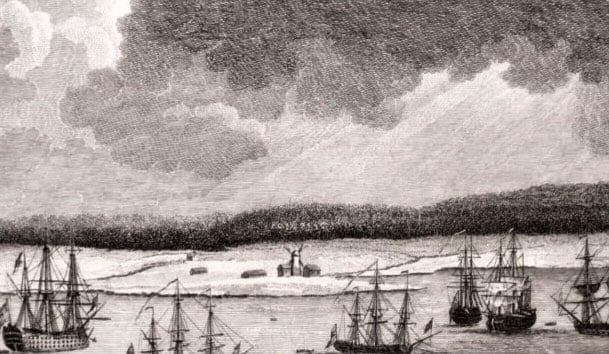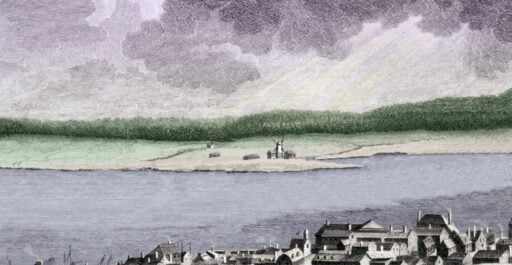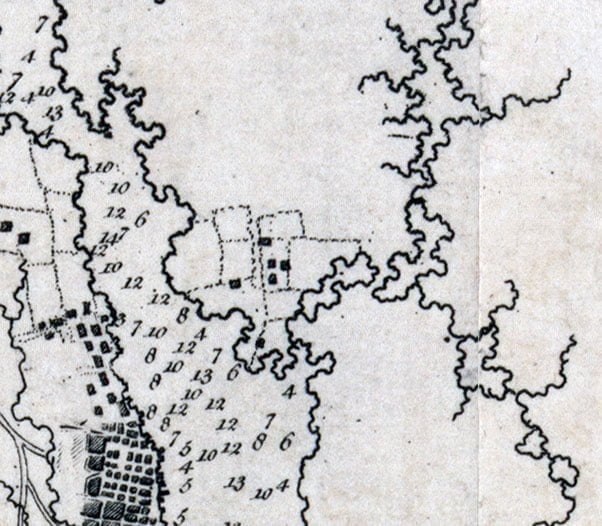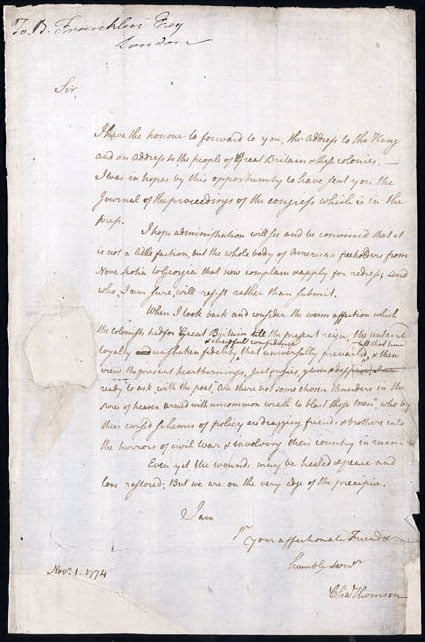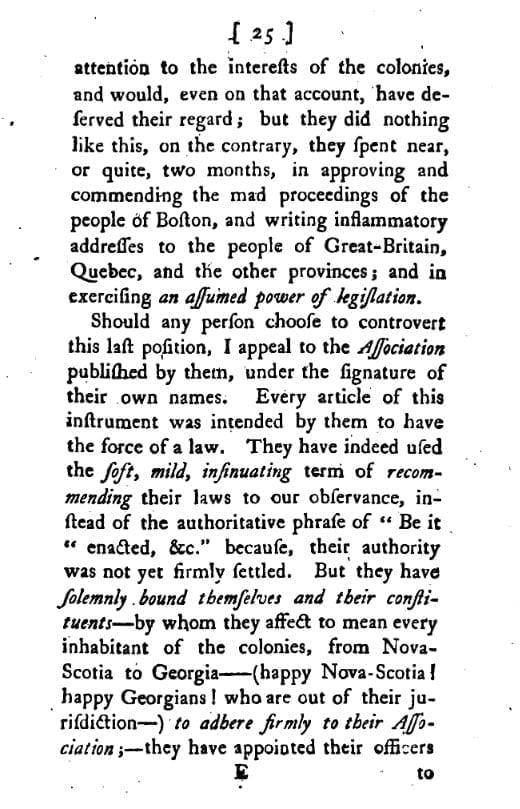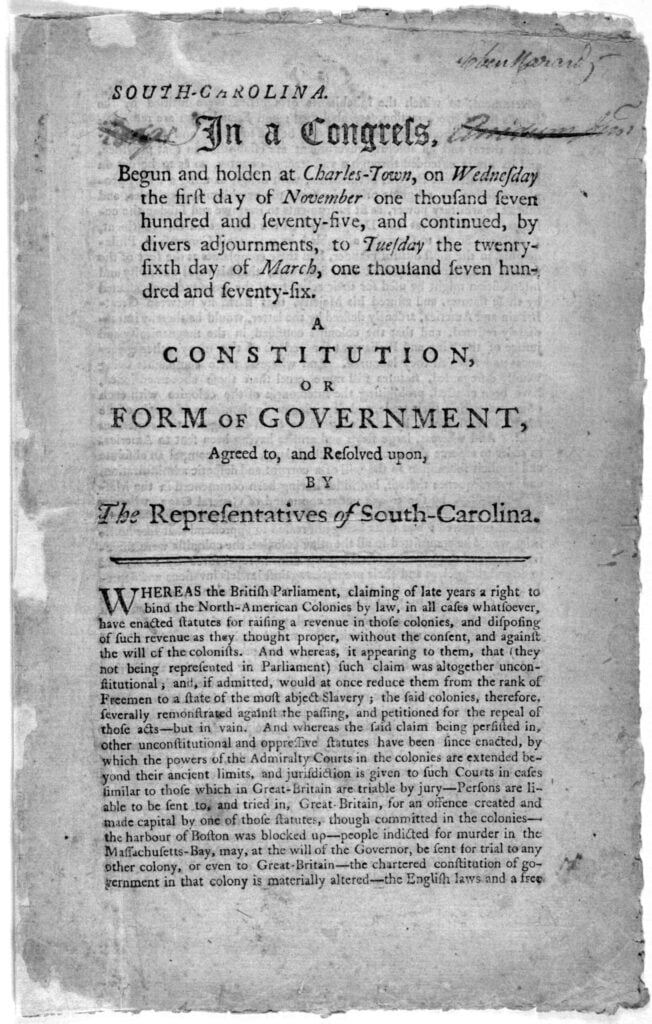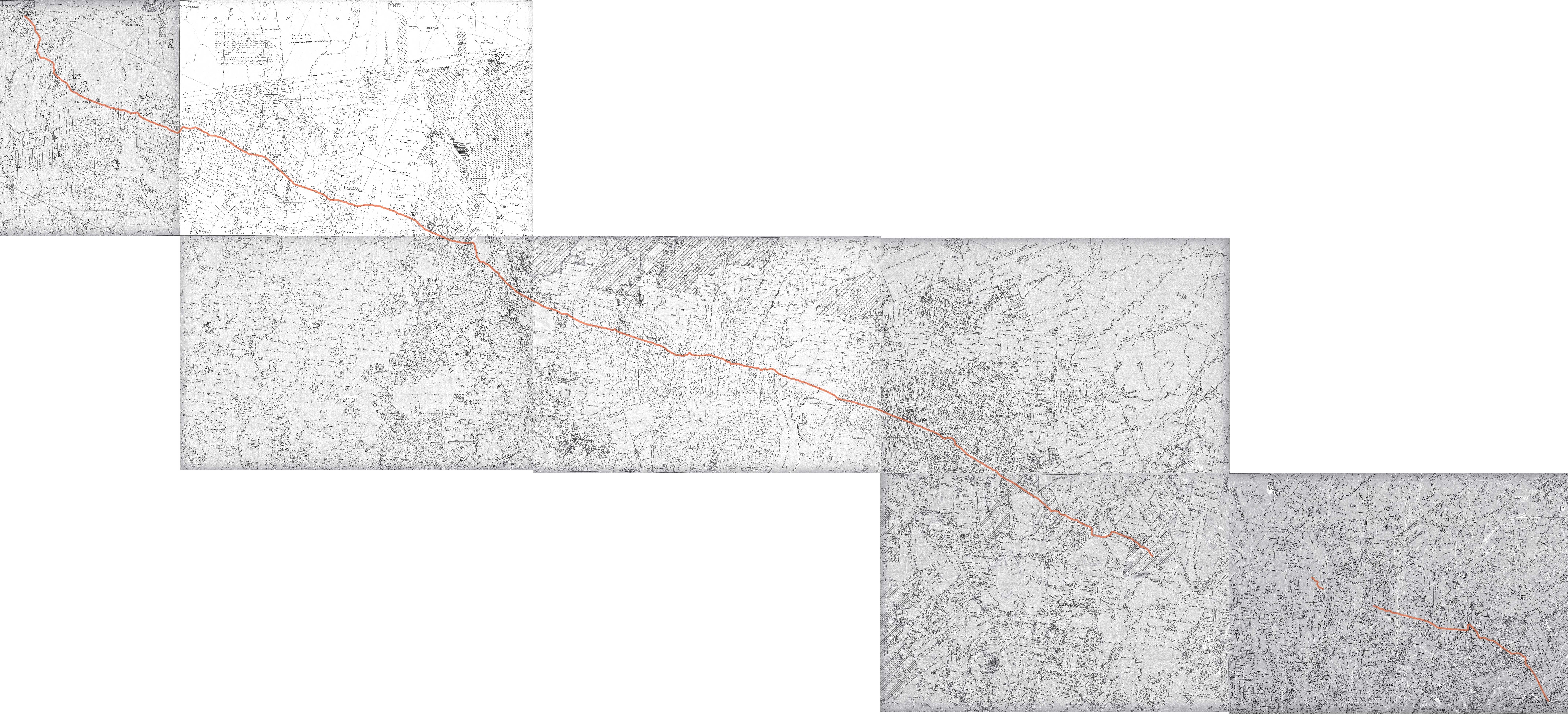Throughout the history of Nova Scotia, epidemics and infectious diseases have been recurring challenges, shaping legislation and public health measures. From as early as Champlain’s account of scurvy in 1606 to the smallpox outbreaks in the 18th and 19th centuries, diseases like smallpox, cholera, and typhus have had significant impacts on the region’s population.
Similarities can be drawn between past responses to epidemics and the modern approach to managing COVID-19. Social distancing measures, such as quarantine and isolation, were enforced through legislation dating back to the 18th century. Centralized decision-making, often led by governmental bodies or health officials, played a crucial role in implementing and enforcing these measures. For instance, laws were passed to regulate the entry of infected vessels into ports, mandate quarantine procedures, and appoint health officers to oversee public health initiatives.
Over time, legislation evolved to address specific diseases and public health challenges. Measures included the establishment of quarantine stations, vaccination programs, and the creation of boards of health to oversee public health initiatives at the local and provincial levels.
“Disaster is frequently the parent of legislation. In surveying the long history of Nova Scotia, we find this saying particularly true.”
“The first recorded instance of illness in Nova Scotia is the account of Champlain of an outbreak of scurvy at Port Royal in 1606. His group of settlers had spent the winter of 1605 at St. Croix Island, where, of a group of seventy-nine, forty-four died of scurvy. In Port Royal in the following year twelve of forty-five died.”
“Of all the epidemics, that of smallpox carried with it the greatest destruction and terror. In 1694 an epidemic was present among the [Mi’kmaq] of Acadia, but we have no knowledge of the number dying as a result. We may be sure it was large, however…”
“There was again an outbreak in Acadia in 1709 where there is evidence to suggest that the disease was of the hemorrhagic type. It was present in Louisburg in 1749. In October of the same year, a few months after the founding of Halifax, it broke out in this settlement. It was particularly destructive in type and during the autumn and winter months about one thousand persons died.”
“In 1801 we find it again in Nova Scotia and there is definite evidence that it was present the previous year. The total number of deaths in 1800 was one hundred and eighty-two, of which one hundred and thirty-eight contracted the disease in the ordinary manner and fourty-four by direct inoculation. In the epidemic of 1801, there were over 8,500 cases in and about Halifax of which accounts are scanty.
The early records indicate that a large number of persons were immunized by inoculation. Vaccination with cowpox was first used in Nova Scotia in the early spring of 1802 by Dr. Joseph Norman Bond of Yarmouth, Nova Scotia.”
“A terrible epidemic, that was in all probability typhus, prevented a successful French invasion in the summer of 1746. A fleet of seventy sailing vessels, having on board 3,150 disciplined troops under the command of the Duc D’Anville, was sent from France to join a force of 1,700 French troops in Nova Scotia. The expedition was to first take Annapolis Royal and then Boston, proceeding thereafter to the West Indies. The fleet arrived in Halifax Harbor, or as it was then known, Chebucto Harbor, ninety days after leaving France. During the voyage, 1,270 men had died and the remainder were ill. The Canadian force had, in the meantime, grown tired of waiting and had retraced its steps to Quebec. After landing the troops an additional number, probably about 1,200, died. The [Mi’kmaq] who approached the camp on the shore of Bedford Basin contracted the disease and in the months following, it is estimated that at least one third of the whole [Mi’kmaq] tribe in the province died.”
“On September 7, 1827, the brig “Fame” arrived in Halifax with 130 persons on board ill with typhus. Smallpox was prevalent in the city at the same time. There was a great loss of life from the two diseases. A large number of deaths were amongst the poor. Some 800 persons of the 11,000 inhabitants died. From Halifax the disease spread to other parts of the province. The first mention of cholera in Nova Scotia is in 1834. It continued for two or three months, particularly in Halifax and about twenty persons died daily.”
“In 1854 a severe epidemic of cholera broke out in Saint John, New Brunswick. It fortunately did not reach Halifax, but its proximity brought such anxiety to the minds of the legislators of that day that as a direct result a City Hospital was built. This afterwards became in turn the City and Provincial Hospital, and the Victoria General Hospital.”
“A ship arrived at Halifax with cholera on board in 1866. Dr. Slater of Halifax, one of those who went on board to care for the victims, died as a result of the disease. It does not appear that an outbreak followed. In 1871 the steamship “Franklyn” came to Halifax with cholera on board. The disease was carried ashore to Chezzetcook, on the coast east of Halifax, where two deaths occurred. So far as is known this was the extent of its spread.”
“Since 1749 various outbreaks of the infectious fevers, particularly scarlet fever and diphtheria, have occurred throughout the province. Diphtheria was particularly fatal amongst children. As these diseases were almost endemic, the public grew used to them and they did not strike the same terror into the populace as those brought by ships. It was the old story of an evil that became tolerated and as a result, public records contain little reference to the ordinary infectious diseases.”
“As previously mentioned, legislation, often temporary, was enacted from time to time following the appearance of epidemic diseases. While there is little doubt that the medical profession from time to time played a part, a great deal Of credit must be given the official bodies of Government for their efforts to meet the recurring dangers.
A perusal of the Uniacke Edition of the Statutes (1758 to 1804) of Nova Scotia, reveals that in the year 1761 an Act was passed which provided that vessels entering the port of Halifax with an infected person or infected persons on board, must anchor at least two miles from town, having an ensign with the Union down at her mast head; no persons were to land and the master was to give notice to the Governor and conform to his orders. Before infected persons were landed, the master was required to give security to pay attending charges; masters violating this Act were to forfeit 100 pounds, to be recovered in a court of record. In other towns one or more of the nearest justices were charged with the responsibility of preventing persons landing from or going on board infected vessels and of transmitting intelligence to the Governor for instructions.
In 1775 authority was given to two justices and the overseers of the poor to make provision for the care of persons coming from infected places and of local persons infected. If such persons were unable to pay the incidental expenses, the town of residence was made liable; if strangers, the charge was to be recovered from the Provincial Treasury.
Provision was made for “inoculating” such persons as desired it against smallpox in houses 160 rods from any dwelling. During the period of resulting illness they were not allowed to go farther than 80 rods from the inoculation houses and flags were to be flown on the premises in order that others might avoid the places.
In 1779 reference is made to the neighboring States of America having been, for several years, visited by yellow fever or “Putrid Fever” or other “Infectious Distempers” and as a consequence, the desirability of requiring persons coming from infected places to “perform” quarantine in such manner as may be ordered by the Governor, Lieutenant Governor or Commander in Chief for the time being and “for punishing offenders in a more expeditious manner than can be done by the ordinary course of law”. The Governor, Lieutenant Governor or Commander in Chief was given authority and was obliged to appoint during pleasure, health officers in all counties and districts of the province ; such officers, duly sworn, were to be paid out of the provincial treasury a reasonable sum for services rendered upon presentation of the accounts to the General Assembly. The 1799 legislation was quite drastic and gave wide powers to the Governor, Lieutenant Governor or Commander in Chief and health officers, to compel quarantine, to punish offenders, to use force if necessary, and to burn or purify goods, wearing apparel, beds, etc. It was provided that “two justices, with the overseers of the poor, where authorized by Governor’s proclamation and after consulting skillful persons, might make provision for treating persons, storing and airing goods on vessels, for removing persons and goods to houses, tents or lazarets appointed for the purpose”. “Skillful persons” as defined in the Act, meant “one or more physicians, surgeons, apothecaries or other skillful persons living in or near the place.” Persons refusing to conform were liable to imprisonment for 6 months or a fine of 50 pounds. “Persons concealing from health officers or emerging letters or goods from a vessel, shall be guilty of a felony, without benefit of clergy”. “Governor’s orders respecting quarantine to be published by proclamation and read the first Sunday in every month in places of public worship.”
In 1809 legislation was enacted which obliged persons within the “town” of Halifax, to keep gutters and streets before their houses, buildings or lots, clear of dirt, filth and nuisances of all kinds. A fine of 20 shillings was imposed on anyone permitting such nuisances and the expenses incurred in removing them.
On the 14th day of April, 1832, two important pieces of public health legislation were placed upon the Statute books of the province. Both appear to demonstrate how apprehensive the authorities of that time were respecting the spread of communicable diseases and particularly their desire to prevent the entry of these from without. By their introduction all previous legislation on the same subject was repealed. One was termed “An Act to prevent the spreading of contagious diseases and for the performance of quarantine” and the other “An Act more effectually to provide against the introduction of infectious or contagious diseases and the spreading thereof in the province”.
The first Act provided for quarantine at definite anchorage points of all vessels coming from ports declared to be infected by the Governor-in-Council. Plague, smallpox, yellow fever, typhus and cholera morbus were mentioned. Power was given the chief officers of the crown to make orders dealing with any health emergency which might arise. Masters of infected vessels were required to report their state and to hoist signals when meeting other vessels, or when within two leagues of land; the day signal—”a large yellow flag of six breadths of bunting at the main top mast head”, and the night large signal lantern, with a light therein at the same mast head”. Penalties up to 200 pounds could be imposed for disobedience or refractory behavior. Provision was made for appointing health officers, superintendents of quarantine and assistants at the several ports, by the Governor.
In the second Act reference is made to a highly dangerous disease called “Cholera” or “Spasmodia” or “Indian Cholera”, which had prevailed on the continent of Europe and in Great Britain. Power was given the Governor to appoint, when expedient, at the several ports of the province, not only health officers, but boards of health for “carrying out and enforcing regulations made by the Governor-in-Council and generally to preserve the public health.” Sweeping powers were given the chief officers of the Crown to make regulations in emergencies.
All ships entering port were required to anchor at quarantine and remain there until boarded by a health officer and given a permit, which permit had to be shown the customs officer. Fees for the health officer’s services in this particular were collected from the masters by the customs officers and paid to the health officers; such fees were fixed by the Governor-in-Council.
This Act also gave the Governor power to appoint “Health Wardens” in Halifax and Justices of the Peace authority to appoint such wardens in any county or district of the province, the wardens to act gratuitously and to be sworn to the due performance of their duties. Wardens were required to examine in day time, as often as they deemed necessary, all houses, buildings, lots, stores, wharves, yards, enclosures and other places and all vessels and boats lying at any place in the province and to ascertain and report to the Governor, or such other persons as might be appointed to receive such reports, “the state and condition of all such buildings, places and vessels in regard to any substances, articles or animals there or therein being, or any trade or business, matter or thing there or therein used, followed or transacted, whereby or by means whereof any nuisance might be occasioned or the public health might be endangered or affected”. The wardens were given power to order the removal of all nuisances and to order any premises “lime washed”, disinfected or “purified”. Penalties of 5 to 100 pounds could be imposed for any infringement of the act.
The two Acts just referred to were to be in force for one year. From this time on and for many years both Acts were, at each session of the legislature. continued for another year.
Chapter 71 of the Acts of 1833 made provision for the destroying. by any constable, of dogs by whose bite the disease “Canine Madness” might be occasioned. Two Justices of the Peace were empowered to make and put into execution such rules and regulations as they thought proper to prevent dogs or other animals, by whose bite the disease “Canine Madness” might be caused, going at large and to destroy them if necessary.
In the year 1850 authority was vested in general sessions of the Peace, or special sessions, consisting of not less than seven magistrates on requisition of the Board of Health, or whenever they considered such measures necessary to prevent the spread of smallpox, to order a general vaccination of persons in a county or district, or any portion thereof ; persons unable to pay to be vaccinated at the expense of the county or district concerned.
On April 8, 1852, a statute was passed empowering the Governor-in-Council to select a site and erect a building for a lunatic asylum.
On the 28th day of March, 1861, legislative enactment was given for the incorporation of the Medical Society of Nova Scotia. In the act of incorporation, the following were named : Rufus S, Black, James C. Hume, Edward Jennings, Daniel McNeil Parker and William B. Webster.
In the year 1862 legal provision was made for the appointment of a medical officer for the City of Halifax by the Board of Health of the City. This medical officer was not to interfere with the health officer for the port of Halifax, appointed by the Provincial Government. The city medical officer was to be under the control and subject to the orders of the Board of Health. He was given power to remove from dwellings in the city, or from boats at wharves within the city, persons having infectious diseases. If the sick persons should not, in his opinion be taken out, then the other occupants could, by him, be removed. He was also authorized to call in consultants; such consultants to be paid out of city funds. In the following year (1863) it was enacted that hereafter the mayor and aldermen of the City of Halifax should constitute the Board of Health of the city and any Acts previously passed and inconsistent with this ruling were thereby repealed.
Three years later (1866) provision was made for the establishment of a quarantine station at the port of Halifax. That Act empowered the Governor to expend $30,000.00 for the purchase of a site and the erection of a hospital, the City of Halifax having agreed to bear one-third of the expenses of the site and the building. Persons within the city having infectious diseases were to be eligible for treatment in and subject to removal to this station. All vessels over 100 tons burden entering the port were made liable to a fee of one cent per ton towards the expenses of maintaining such quarantine station and hospital. Mail steamers were required to pay this fee once a year. Vessels sent into quarantine with infectious diseases were held responsible for all expenses on account of crew or passengers aboard suffering from such diseases.
On the 7th day of May, 1866, an Act to provide against the introduction of diseases amongst horses and cattle was passed. The Governor-in-Council was given the power to make regulations respecting the introduction of such diseases in horses, cattle, sheep and swine and for the destruction of the animals should these diseases be introduced.
In the same year the mayor and all aldermen in the City of Halifax were made “Health Wardens” with power to expend money in sums found necessary to cleanse, purify and keep clean all sewers, drains, yards and places, or to carry into effect all sanitary orders of the Board of Health or health wardens in the interests of the public health.
Legislative authority in the year 1875 more clearly defined the duties of the city medical officer and the office of surgeon to the city prison was abolished. The following duties were imposed upon the city medical officer:
- 1. “To perform services heretofore performed by the City Medical Offcer and prison surgeon”.
- 2. “Act as medical advisor to the Board of Health, the City Council and the Health Inspectors,”
- 3. ‘Visit City Policemen and other city offcials absent from duty on the plea of ill health and report to proper authority”.
- 4. “To attend policemen, firemen or other city officials gratuitously, also persons brought to the police station”.
- 5. “Vaccinate free of charge such persons as the Board of Health may determine”.
- 6. ‘Visit and report upon cases of contagious disease brought to his notice”.
- 7. “Generally to perform all such duties as may be reasonably required or prescribed by the Board of Health or City Council”.
In 1832 a Central Board of Health was established for the province. The President was the Honourable Henry H. Cogswell. Vice-Presidents were Doctors Allan and Johnston. Members were the Attorney-General; the Solicitor- General James Foreman, Esq., Doctors Shoreland, Hume, Sterling and Gregor and William Cogswell, Esq. The last named was the Secretary of the Board. This Central Board was given power to make and enforce regulations, to prevent spread of disease and to regulate the observance of quarantine. At the same time, local Boards were established in various places throughout the province, each having the same authority as the Central Board and each required to report its proceedings to the Central authority. At this time, Boards were named at Digby, Arichat, Lunenburg, Liverpool, Yarmouth, Windsor and Annapolis. There was some indication also that County Boards for Pictou, Hants, Kings, Cumberland and Antigonish were established.
A quarantine hospital was opened in Halifax and Dr. James C. Hume was appointed Health Officer with a “salary of twenty pounds a month while employed, with reasonable allowances for expenses.”
In 1851 all previous legislation relating to public health was consolidated. The Central Board apparently ceased to exist about this time and enforcements of quarantine and the administration of public health were vested in the Governor-in-Council, who had authority to “make quarantine orders applicable to vessels, goods, persons and things being within the province or expected hither from abroad ; to make sanitary orders to cover any special conditions that might arise; to appoint persons at the several ports of the province to act as health officers therefor; to establish at any place a Board of Health for carrying such sanitary orders into effect ; and to prescribe the duties of health officers and Boards of Health”. Health inspectors were to be appointed at general or special court sessions and in Halifax and other parts of the province health wardens were appointed.
The legislation of 1851 remained almost without change until 1873. At this time, some change was made with reference to executive officials and the requirements added that a yellow flag should be displayed on the premises where small-pox or “malignant cholera” prevailed. After 1884 the appointment of health wardens was made by the municipal councils instead of by the courts. In 1893 a Central Board of Health was established as a central organization.”
CAMPBELL, P. S., and H. L. SCAMMELL. “The Development of Public Health in Nova Scotia.” Canadian Public Health Journal, vol. 30, no. 5, 1939, pp. 226–238. JSTOR, www.jstor.org/stable/41977931. Accessed 27 Jan. 2021. https://www.jstor.org/stable/41977931?seq=1

